All Departments
- Aortic valve stenosis (Aortic stenosis)
- arteriovenous malformations
- Avascular Necrosis
- Best cosmetic dentistry in Iran| Dental Treatment in Iran
- Breast Augmentation in Iran|Breast implant in iran
- Breast Reduction surgery
- Cancer in Iran: oncology in Iran
- Cardiology
- Cataract surgery in Iran
- Cochlear Implant Surgery in Iran
- Cosmetic Laser
- Cosmetic Surgery
- Ear cosmetic surgery
- Eye Care
- Eyelid surgery (Blepharoplasty)
- General Heart Surgery in Iran
- General surgery in Iran
- Glaucoma Treatment In Iran
- Hair Transplant
- Heart valve surgery
- lasik Eye Surgery
- Liposuction
- Non-Surgical Cosmetic procedures in iran
- Organ Transplantation in Iran
- Orthopedic
- Paget disease of bone
- Pediatrics
- Plastic surgery
- Psychiatry
- Radiology
- Rhinoplasty surgery in iran
- Shoulder Replacement Surgery
- SkinCare Treatment
- Spinal cord injury
- urolithiasis procedure in iran
- Urology
- Varicocelectomy
Opening Hours
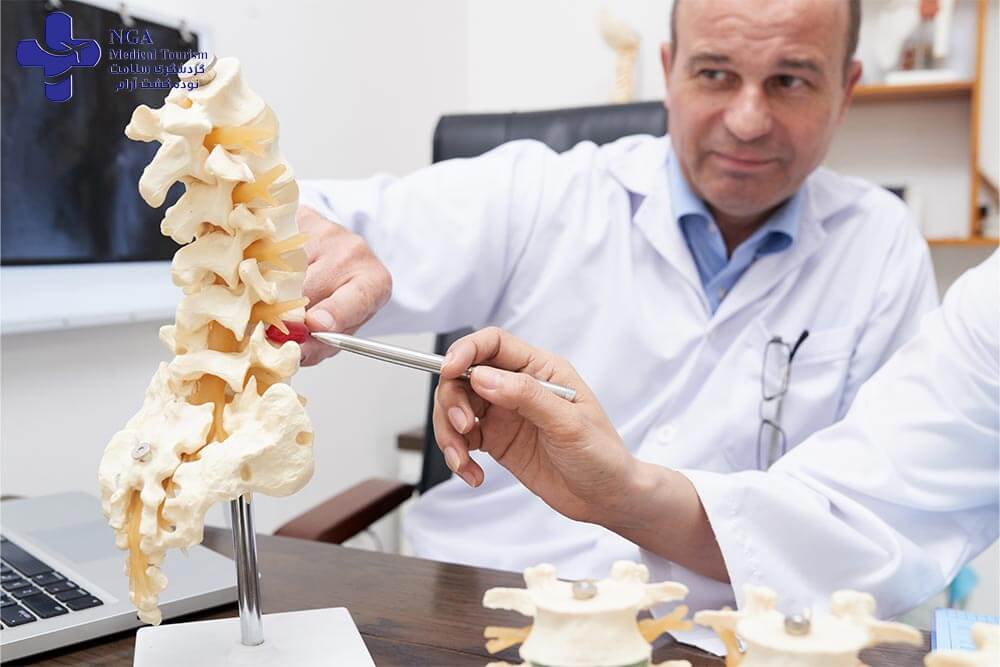
Spinal cord injury
A spinal cord injury (SCI) occurs when there is damage to the spinal cord, which is a bundle of nerves that runs from the brain through the spinal column. SCI can result in a range of symptoms, depending on the location and severity of the injury. The injury can be caused by trauma, such as a car accident, a fall, or a sports injury, or by non-traumatic causes, such as cancer or infection.
The symptoms of SCI can include:
Loss of sensation or movement in the arms, legs, or trunk
Loss of bowel or bladder control
Difficulty breathing or coughing
Sexual dysfunction
Chronic pain or discomfort
Spasms or muscle stiffness
Treatment for SCI involves a multidisciplinary approach, including medical and surgical interventions, rehabilitation, and ongoing support. The goal of treatment is to minimize the effects of the injury and maximize function and independence.
Medical and surgical interventions may include stabilization of the spine to prevent further injury, medications to manage pain and spasticity, and surgery to remove damaged tissue or to repair or replace damaged bones or joints.
Rehabilitation may include physical therapy, occupational therapy, and speech therapy, as well as counseling and support services. The goal of rehabilitation is to help the patient regain as much function and independence as possible.
Ongoing support may include assistive devices such as wheelchairs or braces, as well as access to community resources and support groups.
The prognosis for SCI depends on the severity and location of the injury, as well as the individual’s overall health and response to treatment. Some people with SCI are able to regain significant function and independence, while others may require ongoing support and care.
spinal cord
The spinal cord is a long, thin, tubular bundle of nerves that runs from the brainstem to the lower back. It is the main pathway for transmitting information between the brain and the rest of the body. The spinal cord is protected by the bones of the spinal column (also known as the vertebrae) and is surrounded by cerebrospinal fluid, a clear liquid that provides cushioning and support.
The spinal cord is responsible for many vital functions, including:
1. Sensory processing: The spinal cord receives sensory information from the body and relays it to the brain for processing.
2. Motor control: The spinal cord controls muscle movement and coordination, allowing us to perform a wide range of activities, from walking to playing sports.
3. Reflexes: The spinal cord is responsible for many reflex actions, such as the knee-jerk reflex.
Injury to the spinal cord can result in a range of symptoms, depending on the location and severity of the injury. Spinal cord injuries can be caused by trauma, such as a car accident or a fall, or by non-traumatic causes, such as infection or cancer. Treatment for spinal cord injuries typically involves a multidisciplinary approach, including medical and surgical interventions, rehabilitation, and ongoing support. The goal of treatment is to minimize the effects of the injury and maximize function and independence.

spinal cord anatomy
The spinal cord is a long, thin, tubular bundle of nerves that runs from the brainstem to the lower back. It is composed of two main types of nerve cells: sensory neurons and motor neurons.
The spinal cord is divided into four regions: cervical, thoracic, lumbar, and sacral. There are 7 cervical vertebrae, 12 thoracic vertebrae, 5 lumbar vertebrae, and 5 sacral vertebrae that correspond to these regions.
The spinal cord is surrounded and protected by the spinal column, which is made up of 33 vertebrae. The vertebrae are separated by intervertebral discs, which act as shock absorbers and allow for movement of the spine.
The spinal cord is also surrounded by three layers of protective membranes called the meninges, which help to cushion and protect the spinal cord. The outermost layer is the dura mater, followed by the arachnoid mater and the innermost layer, the pia mater.
The spinal cord is divided into two main sections: the white matter and the gray matter. The white matter is composed of myelinated nerve fibers that transmit information up and down the spinal cord. The gray matter is composed of nerve cell bodies and is responsible for processing and integrating sensory and motor information. The gray matter is organized into two main regions: the dorsal horns, which receive sensory information from the body, and the ventral horns, which send motor information to the muscles.
The spinal cord is also responsible for relaying information between the brain and the rest of the body through a complex system of nerves and pathways. The spinal cord is a crucial part of the nervous system and is essential for the proper function of the body.

incomplete spinal cord injury
An incomplete spinal cord injury (SCI) is a type of SCI that occurs when there is damage to the spinal cord, but some motor or sensory function remains below the level of the injury. Incomplete SCIs are generally less severe than complete SCIs, in which there is a complete loss of motor and sensory function below the level of the injury.
The symptoms of an incomplete SCI can vary widely depending on the location and severity of the injury. Some common symptoms of an incomplete SCI may include:
1. Partial paralysis or weakness in the limbs
2. Loss of sensation or altered sensation in the limbs or trunk
3. Loss of bladder or bowel control
4. Difficulty breathing or coughing
5. Sexual dysfunction
6. Chronic pain or discomfort
7. Spasms or muscle stiffness
Treatment for an incomplete SCI may include a combination of medical and surgical interventions, rehabilitation, and ongoing support. The goal of treatment is to maximize function and independence and to prevent further damage to the spinal cord.
Medical and surgical interventions may include stabilization of the spine to prevent further injury, medications to manage pain and spasticity, and surgery to remove damaged tissue or to repair or replace damaged bones or joints.
Rehabilitation may include physical therapy, occupational therapy, and speech therapy, as well as counseling and support services. The goal of rehabilitation is to help the patient regain as much function and independence as possible.
Ongoing support may include assistive devices such as wheelchairs or braces, as well as access to community resources and support groups.
The prognosis for an incomplete SCI depends on the severity and location of the injury, as well as the individual’s overall health and response to treatment. With appropriate treatment, many people with an incomplete SCI are able to manage their symptoms and maintain a good quality of life. However, in some cases, an incomplete SCI can lead to complications such as chronic pain, pressure sores, and other health problems, which can significantly impact quality of life.
c 6 spinal cord injury
A C6 spinal cord injury (SCI) is a type of incomplete SCI that occurs when there is damage to the spinal cord at the level of the 6th cervical vertebra. This type of injury can result in partial paralysis or weakness in the arms, hands, and upper body, as well as loss of sensation or altered sensation in the limbs or trunk below the level of the injury.
Some common symptoms of a C6 SCI may include:
1. Partial paralysis or weakness in the arms, hands, and upper body
2. Loss of sensation or altered sensation in the limbs or trunk below the level of the injury
3. Loss of bladder or bowel control
4. Difficulty breathing or coughing
5. Sexual dysfunction
6. Chronic pain or discomfort
7. Spasms or muscle stiffness
Treatment for a C6 SCI may include a combination of medical and surgical interventions, rehabilitation, and ongoing support. The goal of treatment is to maximize function and independence and to prevent further damage to the spinal cord.
Medical and surgical interventions may include stabilization of the spine to prevent further injury, medications to manage pain and spasticity, and surgery to remove damaged tissue or to repair or replace damaged bones or joints.
Rehabilitation may include physical therapy, occupational therapy, and speech therapy, as well as counseling and support services. The goal of rehabilitation is to help the patient regain as much function and independence as possible.
Ongoing support may include assistive devices such as wheelchairs or braces, as well as access to community resources and support groups.
The prognosis for a C6 SCI depends on the severity and location of the injury, as well as the individual’s overall health and response to treatment. With appropriate treatment, many people with a C6 SCI are able to manage their symptoms and maintain a good quality of life. However, in some cases, a C6 SCI can lead to complications such as chronic pain, pressure sores, and other health problems, which can significantly impact quality of life.

c4 spinal cord injury
A C4 spinal cord injury (SCI) is a type of incomplete SCI that occurs when there is damage to the spinal cord at the level of the 4th cervical vertebra. This type of injury can result in partial or complete paralysis of the arms, hands, and legs, as well as loss of sensation or altered sensation in the limbs or trunk below the level of the injury.
Some common symptoms of a C4 SCI may include:
1. Partial or complete paralysis of the arms, hands, and legs
2. Loss of sensation or altered sensation in the limbs or trunk below the level of the injury
3. Loss of bladder or bowel control
4. Difficulty breathing or coughing
5. Sexual dysfunction
6. Chronic pain or discomfort
7. Spasms or muscle stiffness
A C4 SCI is a very serious injury and can have a significant impact on a person’s quality of life. Treatment for a C4 SCI may include a combination of medical and surgical interventions, rehabilitation, and ongoing support. The goal of treatment is to maximize function and independence and to prevent further damage to the spinal cord.
Medical and surgical interventions may include stabilization of the spine to prevent further injury, medications to manage pain and spasticity, and surgery to remove damaged tissue or to repair or replace damaged bones or joints.
Rehabilitation may include physical therapy, occupational therapy, and speech therapy, as well as counseling and support services. The goal of rehabilitation is to help the patient regain as much function and independence as possible.
Ongoing support may include assistive devices such as wheelchairs or braces, as well as access to community resources and support groups.
The prognosis for a C4 SCI depends on the severity and location of the injury, as well as the individual’s overall health and response to treatment. With appropriate treatment, some people with a C4 SCI are able to regain some function and independence. However, in many cases, a C4 SCI can lead to significant disability and ongoing health problems that require ongoing care and support.
t6 spinal cord injury
A T6 spinal cord injury (SCI) is a type of incomplete SCI that occurs when there is damage to the spinal cord at the level of the 6th thoracic vertebra. This type of injury can result in partial paralysis or weakness in the legs and lower body, as well as loss of sensation or altered sensation in the limbs or trunk below the level of the injury.
Some common symptoms of a T6 SCI may include:
1. Partial paralysis or weakness in the legs and lower body
2. Loss of sensation or altered sensation in the limbs or trunk below the level of the injury
3. Loss of bladder or bowel control
4. Difficulty breathing or coughing
5. Sexual dysfunction
6. Chronic pain or discomfort
7. Spasms or muscle stiffness
Treatment for a T6 SCI may include a combination of medical and surgical interventions, rehabilitation, and ongoing support. The goal of treatment is to maximize function and independence and to prevent further damage to the spinal cord.
Medical and surgical interventions may include stabilization of the spine to prevent further injury, medications to manage pain and spasticity, and surgery to remove damaged tissue or to repair or replace damaged bones or joints.
Rehabilitation may include physical therapy, occupational therapy, and speech therapy, as well as counseling and support services. The goal of rehabilitation is to help the patient regain as much function and independence as possible.
Ongoing support may include assistive devices such as wheelchairs or braces, as well as access to community resources and support groups.
The prognosis for a T6 SCI depends on the severity and location of the injury, as well as the individual’s overall health and response to treatment. With appropriate treatment, many people with a T6 SCI are able to manage their symptoms and maintain a good quality of life. However, in some cases, a T6 SCI can lead to complications such as chronic pain, pressure sores, and other health problems, which can significantly impact quality of life.

c7 spinal cord injury
A C7 spinal cord injury (SCI) is a type of incomplete SCI that occurs when there is damage to the spinal cord at the level of the 7th cervical vertebra. This type of injury can result in partial paralysis or weakness in the hands, arms, and upper body, as well as loss of sensation or altered sensation in the limbs or trunk below the level of the injury.
Some common symptoms of a C7 SCI may include:
1. Partial paralysis or weakness in the hands, arms, and upper body
2. Loss of sensation or altered sensation in the limbs or trunk below the level of the injury
3. Loss of bladder or bowel control
4. Difficulty breathing or coughing
5. Sexual dysfunction
6. Chronic pain or discomfort
7. Spasms or muscle stiffness
Treatment for a C7 SCI may include a combination of medical and surgical interventions, rehabilitation, and ongoing support. The goal of treatment is to maximize function and independence and to prevent further damage to the spinal cord.
Medical and surgical interventions may include stabilization of the spine to prevent further injury, medications to manage pain and spasticity, and surgery to remove damaged tissue or to repair or replace damaged bones or joints.
Rehabilitation may include physical therapy, occupational therapy, and speech therapy, as well as counseling and support services. The goal of rehabilitation is to help the patient regain as much function and independence as possible.
Ongoing support may include assistive devices such as wheelchairs or braces, as well as access to community resources and support groups.
The prognosis for a C7 SCI depends on the severity and location of the injury, as well as the individual’s overall health and response to treatment. With appropriate treatment, many people with a C7 SCI are able to manage their symptoms and maintain a good quality of life. However, in some cases, a C7 SCI can lead to complications such as chronic pain, pressure sores, and other health problems, which can significantly impact quality of life.
acute spinal cord injury
An acute spinal cord injury (SCI) is a sudden injury to the spinal cord that can result in temporary or permanent damage to the spinal cord and surrounding nerves. Acute SCI can be caused by a variety of factors, including trauma, infection, inflammation, and other medical conditions.
Symptoms of an acute SCI can vary widely depending on the location and severity of the injury. Some common symptoms of an acute SCI may include:
1. Loss of sensation or altered sensation in the limbs or trunk
2. Loss of motor function in the limbs or trunk
3. Difficulty breathing or coughing
4. Loss of bladder or bowel control
5. Sexual dysfunction
6. Chronic pain or discomfort
7. Spasms or muscle stiffness
Treatment for an acute SCI typically involves immediate medical attention to stabilize the patient and prevent further damage to the spinal cord. This may involve immobilization of the spine, administration of medication to reduce swelling and inflammation, or surgery to remove fragments of bone or tissue that may be compressing the spinal cord.
Rehabilitation following an acute SCI may include physical therapy, occupational therapy, and speech therapy to help the patient regain function and independence. Ongoing support may include assistive devices such as wheelchairs or braces, as well as access to community resources and support groups.
The prognosis for an acute SCI depends on the severity and location of the injury, as well as the individual’s overall health and response to treatment. Early intervention and aggressive rehabilitation can improve outcomes and help the patient to regain function and independence. However, in some cases, an acute SCI can lead to permanent disability or other health problems that require ongoing care and support.

conclusion
Spinal cord injury (SCI) is a serious medical condition that can result in significant disability and long-term health problems. SCI can be caused by a variety of factors, including trauma, infection, inflammation, and other medical conditions. The severity and location of the injury can greatly impact the extent of disability and health outcomes.
Treatment for SCI typically involves a combination of medical and surgical interventions, rehabilitation, and ongoing support. The goal of treatment is to maximize function and independence and to prevent further damage to the spinal cord. Rehabilitation following SCI can be a long and challenging process, but with appropriate treatment, many people with SCI are able to manage their symptoms and maintain a good quality of life.
Ongoing research and advancements in the field of SCI are helping to improve outcomes and quality of life for those living with SCI. It is important for individuals with SCI to have access to ongoing care and support, including assistive devices, community resources, and support groups.
Overall, although SCI can be a life-changing condition, early intervention and aggressive rehabilitation can greatly improve outcomes and help individuals with SCI to regain function and independence.
FAQ about spinal and cord injury
An injury higher on the spinal cord can cause paralysis in most of your body and affect all limbs (tetraplegia or quadriplegia). A lower injury to the spinal cord may cause paralysis affecting your legs and lower body (paraplegia).
There are four types of spinal cord injury: cervical, thoracic, lumbar and sacral. The spinal cord is surrounded by rings of bone called vertebra.
Cervical spinal cord injuries affect the head and neck region above the shoulders. It is the most severe level of spinal cord injury.
Diagnostic tests for spinal cord injuries may include a CT scan, MRI or X-ray These tests will help the doctors get a better look at abnormalities within the spinal cord. Your doctor will be able to see exactly where the spinal cord injury has occurred.
Unfortunately, there is currently no treatment to fix a damaged spinal cord. Recovery is a long-term process that will involve an interdisciplinary team of health professionals and rehabilitation to regain mobility and muscle strength. Most recovery will occur within the first 6 months to 1 year following injury.
Did you know that most athletic injuries can be boiled down into three main categories? Acute, Overuse, and Chronic.
Options include soft neck collars and various braces. Surgery. Often surgery is necessary to remove fragments of bones, foreign objects, herniated disks or fractured vertebrae that appear to be compressing the spine. Surgery might also be needed to stabilize the spine to prevent future pain or deformity.

Knee replacement is a surgery to replace damaged parts of the knee joint with artificial ones. It’s recommended for severe arthritis or chronic knee pain. After …
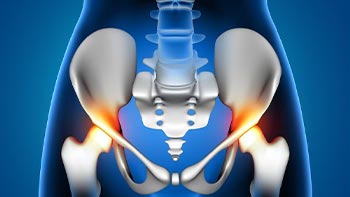
Hip replacement is a surgical procedure to replace a damaged or worn-out hip joint with an artificial one. This procedure is typically recommended for individuals who have …
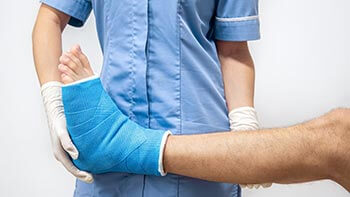
Elbow replacement is a surgical procedure to replace a damaged or worn-out elbow joint with an artificial one. This procedure is typically recommended for individuals who have …

Elbow replacement is a surgical procedure to replace a damaged or worn-out elbow joint with an artificial one. This procedure is typically recommended forindividuals who …
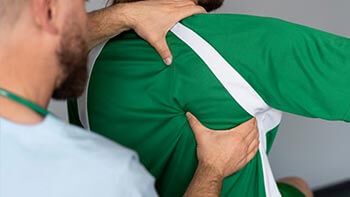
Shoulder replacement is a surgical procedure to replace a damaged or worn-out shoulder joint with an artificial one. This procedure is typically recommended for individuals who have …

Bunion surgery is a procedure to correct a bunion, which is a bony bump that forms on the joint at the base of the big toe. This bump can cause pain and discomfort, and make …
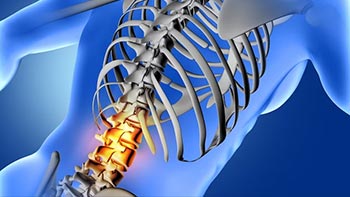
Disc hernia surgery is a procedure to treat a herniated disc, which occurs when the soft tissue inside the spinal disc pushes through a crack in the outer layer of the disc. This can …
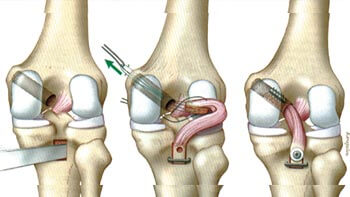
ACL and PCL reconstruction surgery is a procedure to repair a torn anterior cruciate ligament (ACL) or posterior cruciate ligament (PCL) in the knee. These ligaments help keep …

Knee osteotomy is a surgical procedure to treat knee arthritis by reshaping the bones in the knee joint. This procedure is typically recommended for individuals with early-stage arthritis who have …
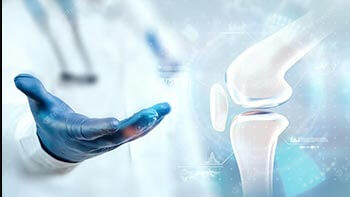
Arthroscopic knee debridement is a minimally invasive surgical procedure that involves removing damaged tissue from the knee joint. This procedure is typically recommended for …
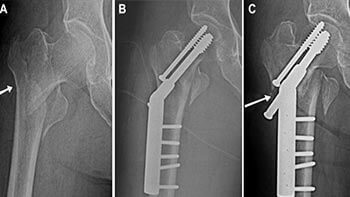
Hip nailing is a surgical procedure to treat a fractured hip by inserting a nail or rod into the femur bone to stabilize and support the hip joint. This procedure is typically recommended for …
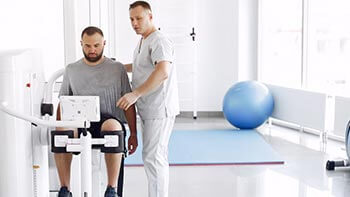
Rehabilitation is a process of restoring physical, mental, and emotional health and function after an illness, injury, or surgery. The goal of rehabilitation is to help individuals regain independence, improve …

